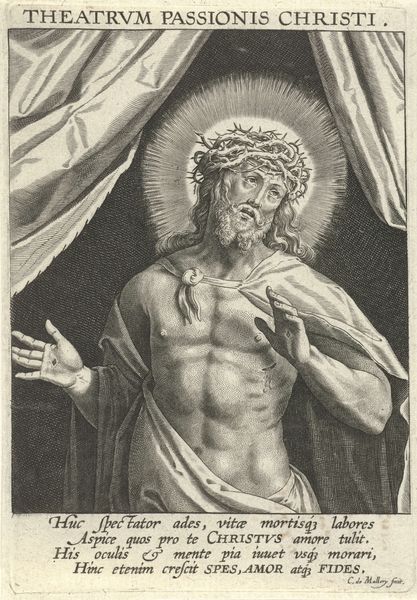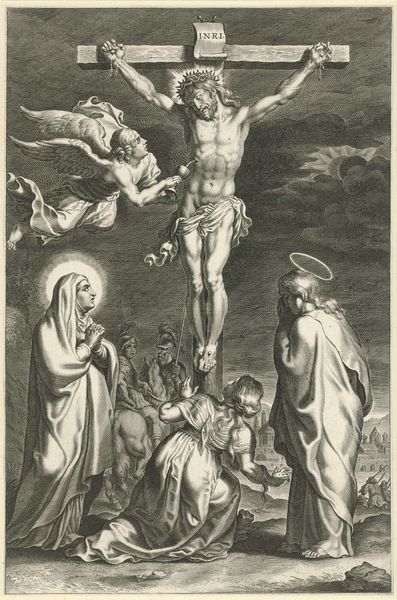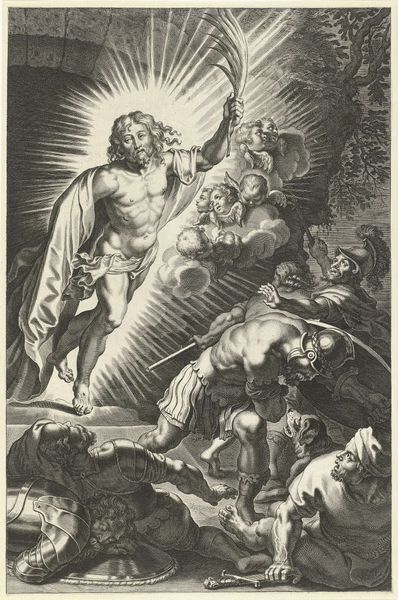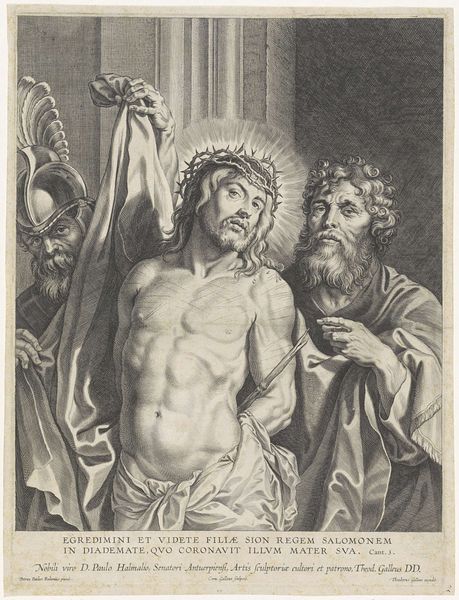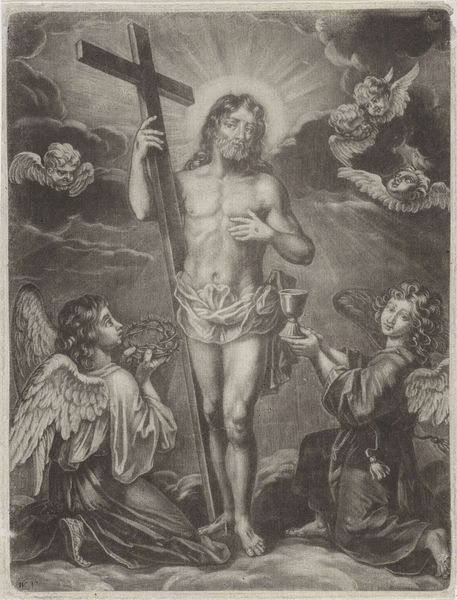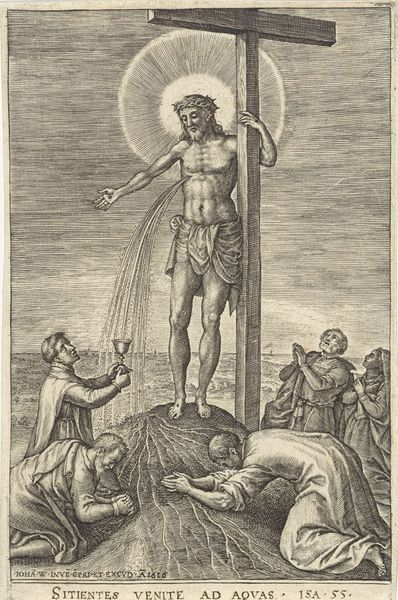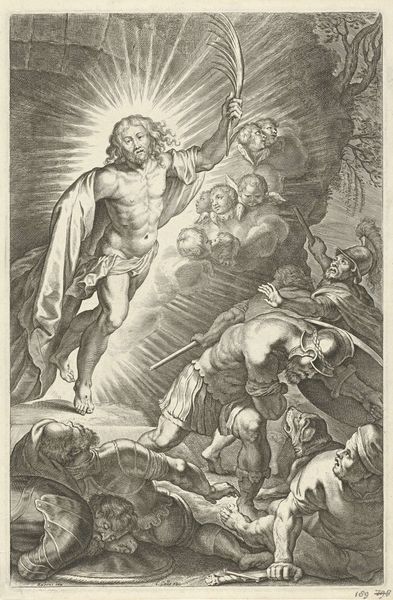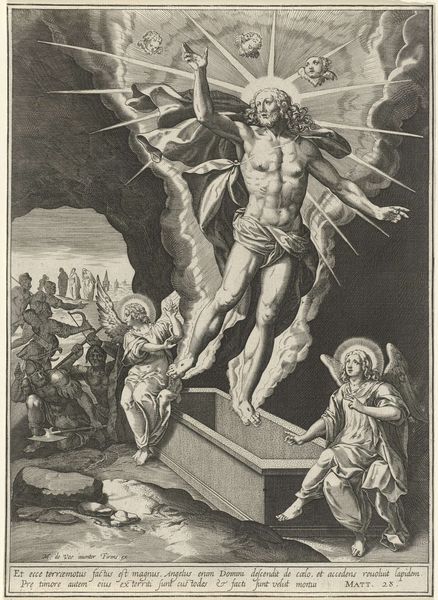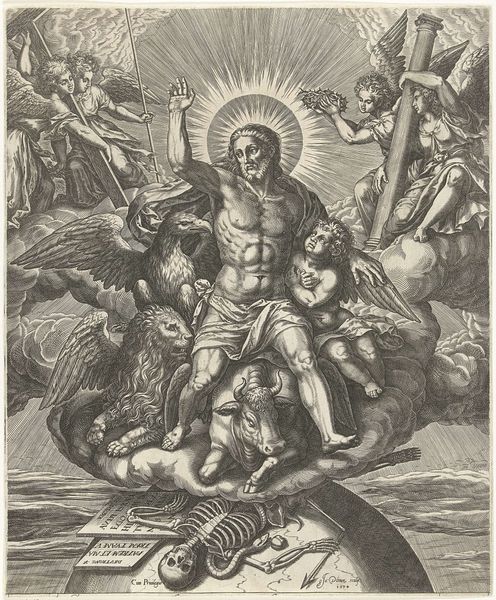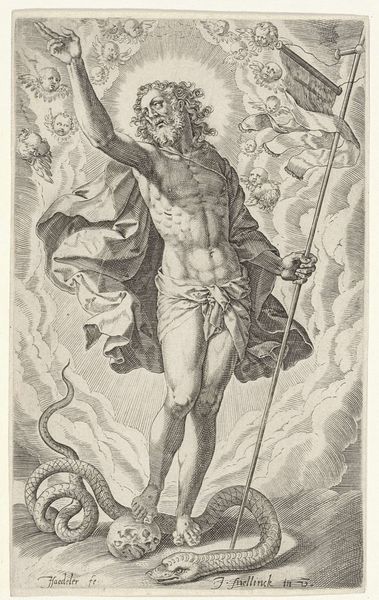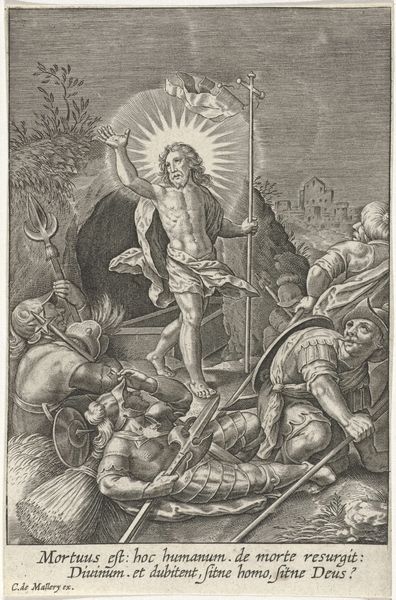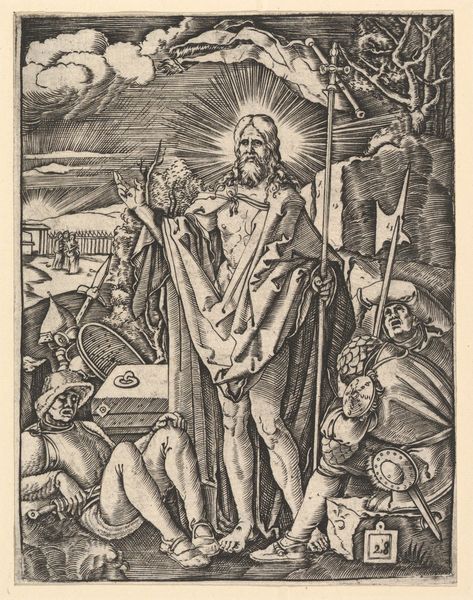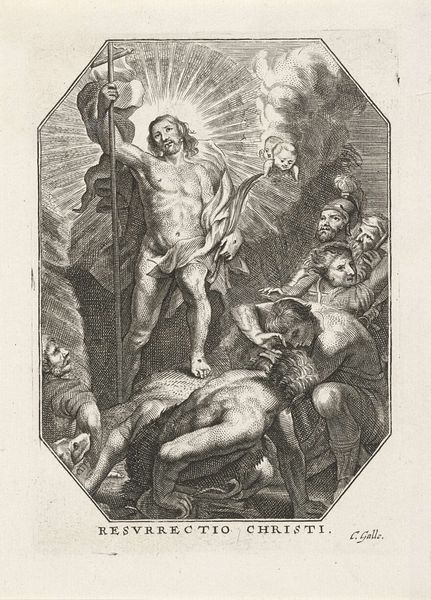
engraving
#
portrait
#
baroque
#
figuration
#
history-painting
#
engraving
Dimensions: height 304 mm, width 219 mm
Copyright: Rijks Museum: Open Domain
Curator: This engraving by Simon van de Passe, created in 1615, is entitled "Christus als Man van Smarten" or "Christ as the Man of Sorrows," now residing here at the Rijksmuseum. The figure of Christ fills most of the frame, standing frontally, nearly nude save for a cloth around his loins. My first thought: the radiant light source and surrounding baroque drama almost masks its socio-political intent as propaganda for early Dutch independence. Editor: Propaganda, really? To me, the first impression is one of immense pathos. The composition is dominated by Christ, yes, but the symbols are intensely evocative: the angels, the wounds, and most especially, the crown of thorns, all point toward a deep well of sorrow and sacrifice. The somber grayscale of the engraving emphasizes a sense of melancholy. Curator: But isn't it a calculated melancholy? Remember, engravings like this circulated widely, often intended to stir specific emotions linked to confessional or political alliances. Look at the open book – it likely displays verses designed to reinforce the message of sacrifice for a cause, even divine suffering endured to legitimize secular struggles. The symbols you note function as cultural and theological shorthands accessible across literate classes. Editor: I see what you mean, that's quite valid. I do also observe how the iconography deliberately merges earthly and heavenly imagery. Christ's very human wounds and suffering are elevated by angelic attendants and the divine light behind him. There's that contrast—suffering but divine, humble yet powerful. It is playing with symbols that the audience immediately identifies with, which strengthens the image's lasting effect. Curator: Precisely! The image of martyrdom became associated with national liberation throughout this era. We see this in contemporary engravings about figures of independence movements; they co-opt Christ’s iconic martyrdom, just in this era. And that association bolstered a shared social identity. Editor: Fascinating how the image layers both cultural memory with present-day socio-political tensions. It's so direct with the viewer, that it still feels resonant now. Curator: It's a clever conflation of immediate experience with lasting symbolism – to serve an ongoing political function. Editor: Agreed. The fusion of emotion and strategy here makes it a piece which operates on a different dimension to this day.
Comments
No comments
Be the first to comment and join the conversation on the ultimate creative platform.
